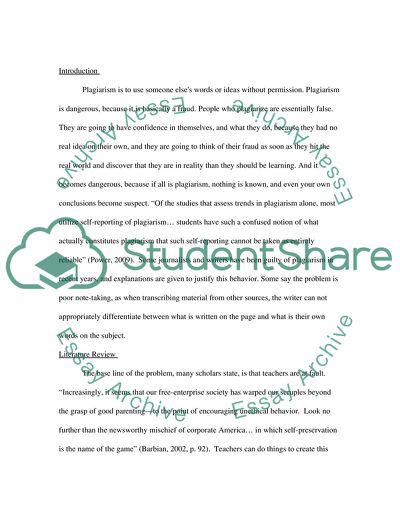Cite this document
(Plagiarism as a Form of Academic Dishonesty Research Paper, n.d.)
Plagiarism as a Form of Academic Dishonesty Research Paper. https://studentshare.org/english/1747467-report-about-plagiarism-is-one-form-of-academic-dishonesty-although-it-cannot-be-assumed-that-all-plagiarism-occurs-merely-because-a-student-is-aiming-to-cheat-discuss
Plagiarism as a Form of Academic Dishonesty Research Paper. https://studentshare.org/english/1747467-report-about-plagiarism-is-one-form-of-academic-dishonesty-although-it-cannot-be-assumed-that-all-plagiarism-occurs-merely-because-a-student-is-aiming-to-cheat-discuss
(Plagiarism As a Form of Academic Dishonesty Research Paper)
Plagiarism As a Form of Academic Dishonesty Research Paper. https://studentshare.org/english/1747467-report-about-plagiarism-is-one-form-of-academic-dishonesty-although-it-cannot-be-assumed-that-all-plagiarism-occurs-merely-because-a-student-is-aiming-to-cheat-discuss.
Plagiarism As a Form of Academic Dishonesty Research Paper. https://studentshare.org/english/1747467-report-about-plagiarism-is-one-form-of-academic-dishonesty-although-it-cannot-be-assumed-that-all-plagiarism-occurs-merely-because-a-student-is-aiming-to-cheat-discuss.
“Plagiarism As a Form of Academic Dishonesty Research Paper”. https://studentshare.org/english/1747467-report-about-plagiarism-is-one-form-of-academic-dishonesty-although-it-cannot-be-assumed-that-all-plagiarism-occurs-merely-because-a-student-is-aiming-to-cheat-discuss.


